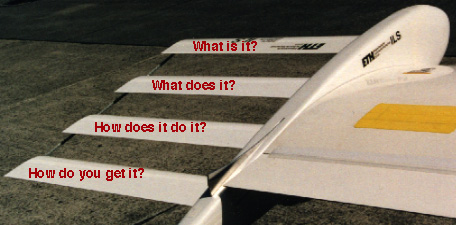 |
|||||
| Home | Research | For Teachers | HISTORY Level 1 Level 2 Level 3 |
PRINCIPLES Level 1 Level 2 Level 3 |
CAREER Level 1 Level 2 Level 3 |
| Gallery | Hot Links | What's New! | |||
| Web Administration and Tools | |||||


Dr. U. La Roche was asked to comment on how he got the idea for the winggrid. This is what he had to say:
We studied patents on aeronautics, e.g., Class 244 or international class B64C. We noticed that the question of how storks fly was an ongoing study without success since the time of Otto Lilienthal.
So we got interested in this question and after a few years started to think that the question could be solved. (if nature can do it, why can't we do it, as well?)
As background, I was not only an aerodynamicist, but I had also a good knowledge of turbomachinery. This proved to be very important, since the wingtip feathers, as it turned out, are really a grid of airfoils like those used in turbines and described in textbooks on turbomachinery and not on airplanes and wings.
Anybody studying the Winggrid material will notice, that there are always very old books mentioned. This reflects the fact that we are dealing with quite an old engineering science. As shown by the invention, quite a few times it is the basic understanding of the problem that counts and an inquiring mind never taking anything for granted.
A severe difficulty we are facing now is that the WINGGRID is not described in airplane textbooks. So, quite a few aeronautical people simply say it doesn't work and doesn't exist unless they see it someday flying.
|
For the advanced wing tip specialist: How should the winggrid be classified among other wing-tip devices? See CLASSIFICATION of the WINGGRID
How do I contact for more information? E-mail: ularoch@ibm.net
mail to: LA ROCHE CONSULTING
Heilighüsli 18
8053 Zürich
Switzerland
phone/fax: **411 382 1349
